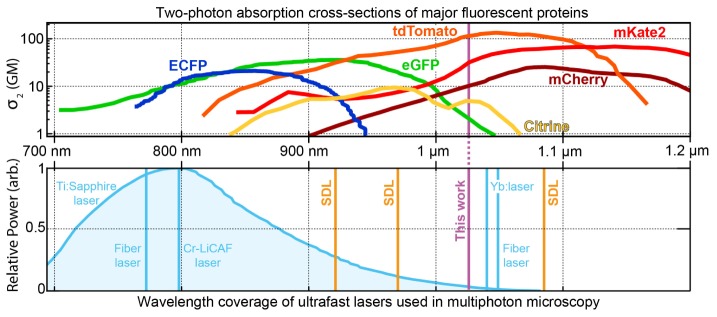Fig. 1.
Overview of the two-photon absorption cross-sections of various fluorescent proteins [8] used in two-photon microscopy combined with the spectral coverage of existing ultrafast lasers. Ti:Sapphire lasers have a large tuning range of >300 nm. In contrast, other commercial ultrafast lasers (blue lines) cannot be tuned to match the absorption peaks of dyes. Ultrafast semiconductor disk lasers (SDLs, orange lines) have the potential to become less expensive sources and can be designed with emission wavelengths between 650 and 2800 nm (typical lasers with a center wavelength at 920-nm, 970-nm and 1080-nm are shown here, but more options are possible) [9, 10]. The SDL laser presented in this paper operates at 1027 nm (indicated as “This work”).

